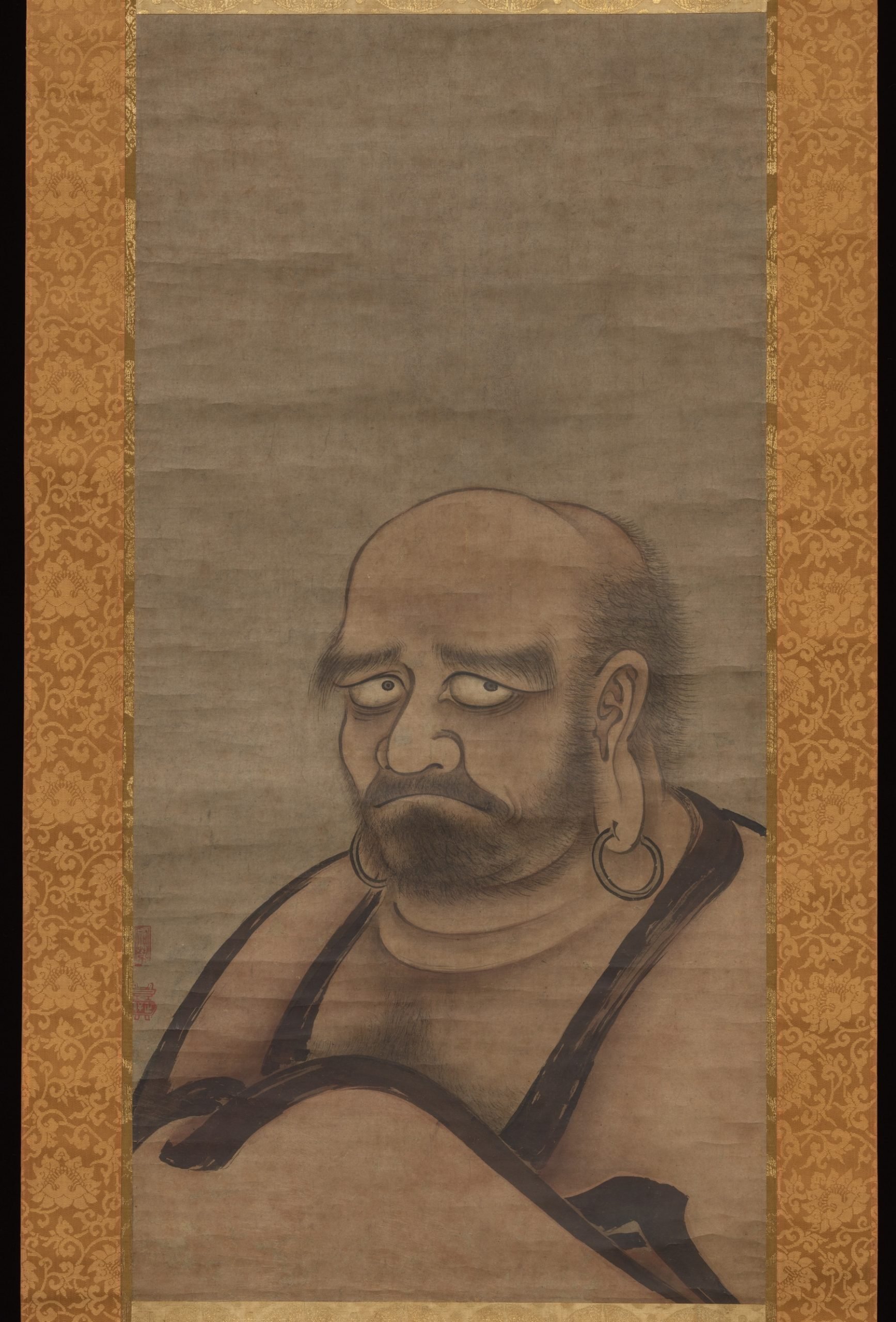
For an episode of the Art Angle podcast, we asked Artnet News writers and editors to tell us about one work of art that brings them joy. The following is a part of a series of transcripts of the answers. You can listen to the entire podcast on Apple Music, Spotify, or here.
The work I picked is by an artist named Kano Masanobu. It’s called Bodhidharma in Red Robes. It’s from late 15th century Japan, and it’s in the Met Museum’s East Asian galleries.
This is a hanging scroll. There’s a border at the top with gold-leaf butterflies and flowers that lets you know what you are looking at is special, but mainly, it’s just this very vivid, bust-length portrait, against an empty background, of this very grizzled looking man. The colors are very muted; it’s an ink drawing with just a little bit of color to set the main figure and his robes off from the background.
What first stopped me is just how grumpy he looked. He’s got these big, haunted eyes, and he’s kind of giving you the side eye, like he’s not sure about you. He’s got heavy, frowny, wispy eyebrows. He’s got a five o’clock shadow. His hair is kind of scruffy.
I honestly am not an expert in this type of art. I know from doing a little research that the figure here, Bodhidharma, is this legendary monk. He’s the father of both Zen and of kung-fu, actually. There’s even a myth that he was so committed to meditating that he cut off his own eyelids to keep awake, and where they landed a tea plant grew, and that’s the origin of tea. I guess that’s why Bodhidharma is often depicted with these large eyes. It’s also why tea is supposed to keep you awake, incidentally.
But I didn’t know any of that when I first saw this painting. And describing it, I guess it’s a weird pick for an artwork that makes me happy. I mean, I will say, just discovering something makes me happy, the process of letting an artwork find you, and letting its meaning steep with you is one of my favorite things.
But I also really love how vivid this image is. Like this painting really captures something for me. It just really looks like this guy who’s had a hard day, who’s carrying the weight of the world on his shoulders, who thinks too much. He looks like someone who hasn’t had his coffee yet. It’s simple, but it’s very powerful for me.
After I saw this artwork and kept thinking about it; I kept thinking about why it stayed with me. The text at the Met says it is about Bodhidharma’s message: “look within to become a Buddha.” But this guy doesn’t look like he’s looking inside; he definitely is looking out at me. And he doesn’t look like he’s found tranquility; he’s scowling at me.
And I guess I started to think about Bodhidharma in Red Robes like it was a Zen riddle itself. That’s the Zen philosophy, that you ponder these riddles and paradoxes, and you start to understand that what you thought you knew maybe wasn’t what you knew. So, I started to think to myself, maybe I could think about this painting of Bodhidharma, this enlightened person, as being about exactly this question: What does it mean to find inner peace? Maybe it looks like the opposite of what you thought it was going to look like.
Maybe this is wrong. It’s just my contemporary way of thinking about this image. But I do find something pretty wonderful and comforting in that thought.
More Trending Stories:
Art Dealers Christina and Emmanuel Di Donna on Their Special Holiday Rituals
Stefanie Heinze Paints Richly Ambiguous Worlds. Collectors Are Obsessed
Inspector Schachter Uncovers Allegations Regarding the Latest Art World Scandal—And It’s a Doozy
Archaeologists Call Foul on the Purported Discovery of a 27,000-Year-Old Pyramid
The Sprawling Legal Dispute Between Yves Bouvier and Dmitry Rybolovlev Is Finally Over